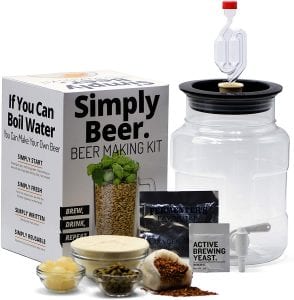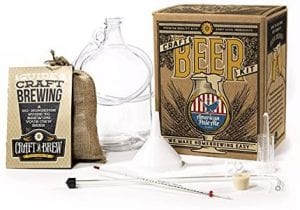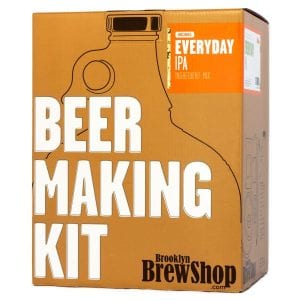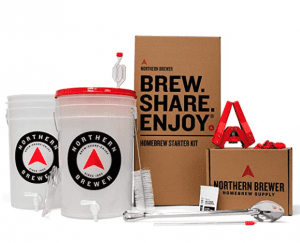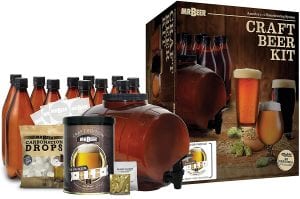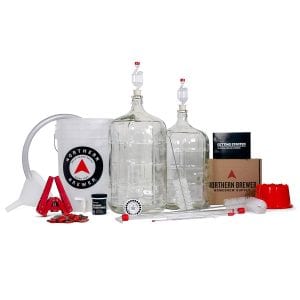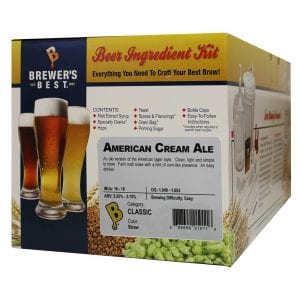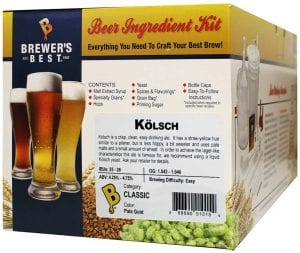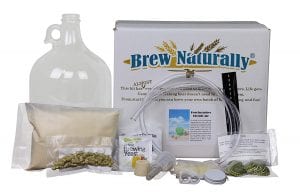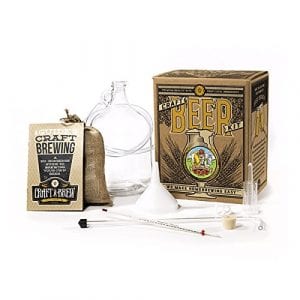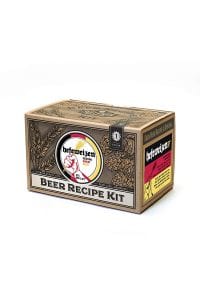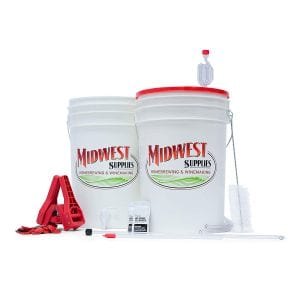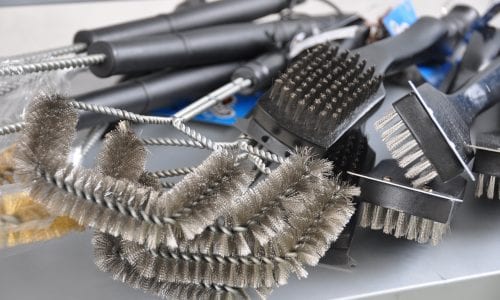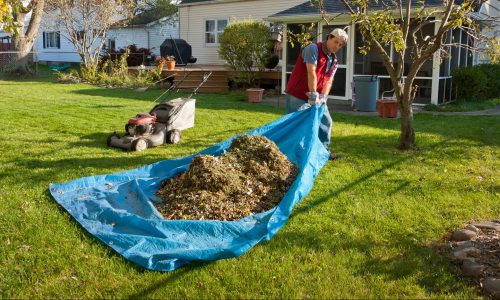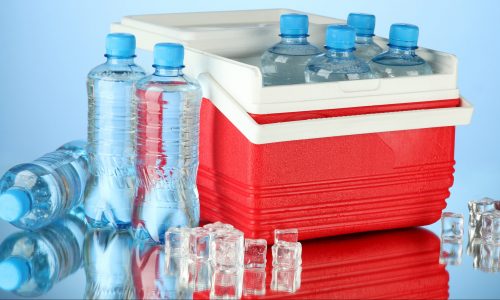The Best Homebrew Kit
We looked at the top 12 Homebrew Kits and dug through the reviews from 47 of the most popular review sites including and more. The result is a ranking of the best Homebrew Kits.
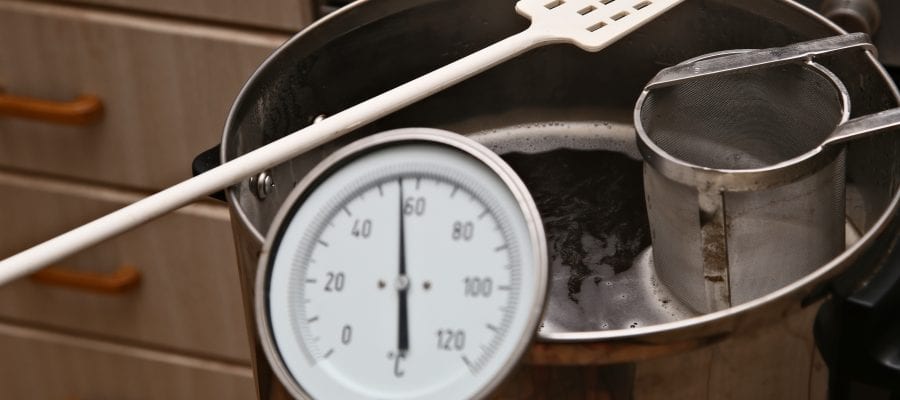
Our Review Process
Don't Waste Your Money is focused on helping you make the best purchasing decision. Our team of experts spends hundreds of hours analyzing, testing, and researching products so you don't have to. Learn more.
Our Picks For The Top Homebrew Kits
- 1. Midwest Supplies Simply Beer Small Batch Homebrew Kit
- 2. Craft A Brew American Pale Ale Homebrew Kit
- 3. Brooklyn Brew Shop Everyday IPA Beer Making Kit
- 4. Mr. Beer Complete Beer Making Starter Kit
- 5. Northern Brewer Homebrew Starter & Recipe Kit
- 6. Northern Brewer Homebrew Starter Kit
- 7. Brewer’s Best Homebrew Beer Ingredient Kit
- 8. Brewer’s Best Kölsch Homebrew Kit
- 9. love2brew Homebrew Starter Kit
- 10. Craft A Brew Beer Kit
- 11. Craft A Brew Hefeweizen Beer Kit
- 12. Midwest Supplies Homebrewing Starter Kit
Nature lovers will want to give this homebrew kit a try. It's formulated with malt, caramel and baking chocolate flavors, but it's the hint of campfire coffee that will bring you back to your time on the lake. The kit includes everything you need to create a 1-gallon batch of beer.
Most EconomicalIf you're searching for a gift for the beer lover in your life, this homebrew kit is an excellent choice.
This homebrew kit is made and manufactured in the United States using only high-quality ingredients. All of the equipment included in the kit is durable and reusable, so you only need to spend money later to replenish the ingredients. The set makes 1 gallon of beer at a time.
Light Malt FlavorsYou'll find this homebrew kit comes in an attractive package that makes it an excellent housewarming, birthday or bachelor party gift.
Only real seasonal ingredients are used in this homebrew kit. The results is a brew that is not only fragrant, but also full of flavor. Creating the brew is a breeze, as the kit comes with step-by-step instructions and access to easy-to-follow videos.
All Natural BrewWith this easy-to-use homebrew kit for beginners, you'll be able to create 10 12-oz bottles of beer.
This homebrew kit has rightfully earned our Best Overall rating. It has everything needed to brew at home, including a five-gallon steel kettle. It also includes additional key features, like a long spoon and auto-siphon, which many other options lack. You won't find a better kit to guide you through brewing your first batch.
Ready For Immediate BrewingTake the guesswork out of homebrewing with this all-inclusive homebrew kit.
Buying Guide
Hobbies are a great thing to have to challenge our minds to learn a new process or life skill. As adults can often be consumed with a career and family life, having a hobby can create a way to start, learn and accomplish a great thing. Homebrewing beer is an excellent example of this. The process is basic enough to learn pretty quickly but requires practice to make it perfect.
“Basically, brewing is a really fun chemistry experiment,” says our resident culinary expert Julie Chernoff, food journalist, dining editor of Better magazine and member of Les Dames d’Escoffier. “If you’re into beer and want to homebrew, a brewing kit is definitely your worth investigating.”
The kits are easy and relatively affordable for a beginner hobby. Instead of trying to buy all the pieces and parts separately, a homebrew kit is a much more sensible way to go. Let’s take a look at what you need in the best homebrew kits and how to get started.
Creating that incredible home-brewed beer is just a few steps away. There are several specialty items you will find in the various brew kits that are out there today. There are beginner kits filled with essential components you will need for brewing. You’ll also find kits that include ingredients for the beer, in addition to the equipment, so you can start the brewing process right away.
Just make sure you have some of the basics you’ll need to start your home brew properly. If the kits you’re looking at include those, you’ve got a good basis for beginning your new hobby.
“Make sure that they contain a fermenting bucket with lid, a bottling bucket with spigot, a large stainless-steel brew kettle, floating thermometer and auto-siphon,” advises Chernoff. “Bottles and bottle caps can be purchased separately, as can sanitizer and carbonation drops.”
To begin with the brewing process, you will discover that most kits offer a sanitizing solution to ensure that no bacteria gets into the beer from the equipment. This process involves cleaning with brushes, water and solution to remove any visible dirt, dust or residue from the tubing that you’ll use throughout the brewing process. A carboy brush is often the go-to tool for the plastic elements of the brew kit as it offers a scratch-free cleaning method for any soft plastic pieces.
Once the general washing is accomplished, the parts are soaked in a sanitizing solution that is acid-based and diluted. Iodophor is another solution that can be used to achieve sanitization. This is one of the early, but more important steps, of brewing.
After you’ve cleaned and sanitized all the kit parts, you will learn the purpose and names of each item. Understanding the function of each piece will help you to arrange the parts in an effective way for the correct brewing process. Most kits offer a “Getting Started” handbook so you can learn as you go. In the guidebook, the easy, step-by-step directions will help you piece together the kit for brewing.
Expect a few main components to the physical kit: the bottling and transferring equipment, fermentation vessels and the measuring equipment. The amount of beer you want to brew will determine the size of your parts and the size of your kit.
“For smaller jobs, there are 2-gallon kits; for larger, opt for the 6.5-gallon capacity buckets,” Chernoff advises.
If you find an excellent starter kit, it will include all the ingredients needed to start your brew.
The bottling and transferring equipment include quite a few necessary pieces to accomplish a good brew. In this part of the kit, you’ll find vinyl transfer tubing, plastic bottle filler, bottle caps and capper, plastic bottling bucket with spigot, auto-siphon, sterile siphon starter, funnel and bottles, either 12 ounces or 22 ounces, that have been cleaned and sanitized or are new. Brewing tools in this part of the kit include mesh steeping bags, long spoon, a kettle and wort chiller.
For fermentation vessels, kits usually contain just a few parts to get you brewing. The plastic bucket fermenter is either a five or six-gallon bucket featuring a lid and offers a more portable option over a glass version. The lid has a hole that the airlock fits into during the alcohol fermentation process. A carboy is another name for a cylindrical-shaped jug made of either plastic or glass and used to stop from letting air in. A rubber stopper with a hole is often used as an airlock on the carboy. You will find a glass carboy in the one-gallon size in this Craft a Brew Kit.
The measuring equipment includes all the tools you need to ensure that your beer is actually brewing correctly. The hydrometer is what measures the sugar in terms of gravity points. The gravity point scale starts at 1.000 for water and increases during the fermentation process. Depending on what type of beer you are brewing, you’ll know the brew is ready when it reaches a certain number. The hydrometer jar is the container filled with wort, which is what beer is called before it ferments. You use it to measure the gravity points with the hydrometer. You’ll also need a thermometer to measure the temperature of your solution. It’s best to use a new one to avoid contamination from your kitchen thermometer.
If your kit does not include ingredients, you may want to search for an ingredient kit to buy separately. Although you can go into a hops store and buy all the different ingredients, it’s easier for beginners to use a kit that includes all the ingredients you need in the right measurements. Some kits offer just that with malt syrup, yeast, grains, hops, spices, sugar, and even instructions for beginners.
Start off your homebrewing hobby on the right foot with these top-notch homebrew kits. You will learn so much from using a starter kit, and you will enjoy the fruits of your labor when you taste your first homebrewed beer. Once you practice and refine the taste of your beer, you can invite friends and family to enjoy it with you.
“There are so many beer kits on the market now, reflective of the growing popularity of homebrewing,” Chernoff says. “If you live somewhere without easy access to craft beers, you’re feeling experimental or you are just a straight-up beer aficionado, this DIY project might be right up your alley.”
Our Expert Consultant

Culinary Expert
Julie Chernoff is a long-time member of Les Dames d’Escoffier (past president of the Chicago Chapter, and current co-chair of the LDEI Legacy Awards Committee), the Association of Food Journalists (AFJ) and the International Association of Culinary Professionals.
Chernoff is the dining editor of Better, a lifestyle website and print magazine. Her journalism started in the test kitchens of Weight Watchers Magazine. She holds a BA in English from Yale University and is a graduate of the California Culinary Academy. She has spent the last few decades styling, photographing, teaching, developing recipes, editing, thinking and writing about food.
Why we recommend these homebrew kits?
Products Considered
Products Analyzed
Expert Reviews Included
User Opinions Analyzed
Our experts reviewed the top 12 Homebrew Kits and also dug through the reviews from 47 of the most popular review sites including and more. The result is a ranking of the best of the best Homebrew Kits.
DWYM is your trusted roduct review source. Our team reviews thousands of product reviews from the trusted top experts and combines them into one easy-to-understand score. Learn more.
The Best Bang For Your Buck
Northern Brewer Homebrew Starter Kit
Key Takeawy
This homebrew kit has rightfully earned our Best Overall rating. It has everything needed to brew at home, including a five-gallon steel kettle. It also includes additional key features, like a long spoon and auto-siphon, which many other options lack. You won't find a better kit to guide you through brewing your first batch.
What other experts liked
What other experts didn't like
What to Look For
- Information is key when you endeavor on your homebrewing adventure. Look for a kit that comes with a manual or instructions to help guide you through the brewing process.
- If you need a good recipe, be sure to find a kit with ideas and suggestions for recipes.
- It is highly recommended to invest in a bigger kettle for brewing because different types of beer require bigger kettles for boiling.
- Wort chillers are worth the money. They will save you a significant amount of time when getting your wort to come down to temperature.
- A bigger auto-siphon is another way to save time when making that homebrew. A half-inch size is recommended to keep the wort flowing from one vessel to another at a good pace.
- Blow-off tubes in place of airlocks will keep you from cleaning up explosive messes from the fermentation stage of your beer making.
- To save yourself time and frustration, cover your stove burners with aluminum before the boiling process. That way, when the boil over happens, you just have to take the aluminum foil off and throw it away rather than cleaning the entire space.
More to Explore
Though homebrewing has been around forever, it was illegal in 1919 when Prohibition in the United States first began. It wasn’t until 1978 that it was federally legalized again. Of course, each state had its own timeline of allowing for the legalization of homebrewing. Alabama and Mississippi were the last two states to do so, not making homebrewing legal again until 2013.
Although it is legal, there are caps on the amounts of beer you can brew at home. This number varies among states; however, average limits are 100 gallons per adult and 200 maximum for a household. This is the cap for the year for each household.
The homebrewing hobby has exploded since 2013. The American Homebrewers Association had a rough estimate of 37,000 homebrewers in 2013, and by 2017, it estimated 1.1 million homebrewers in the U.S.
The average age of homebrewers in the U.S. is 42, encompassing a typical range of 30 to 49. Homebrewers are not region picky and are spread evenly throughout the country. The percentage of homebrewers that are married is 85%, and the average household income of homebrewers in $75,000 or more.
Some popular people who count home brewing as one of their hobbies include actors, actresses, supermodels and even a former president. Will Wheaton, the “Star Trek” actor has a blog about his homebrewing experiences. Kathy Ireland, a Sports Illustrated model, homebrewed for quite a while and enjoyed it so much she spoke of opening her own brewery. And President Barack Obama also enjoyed brewing his own beer at home. Interestingly enough, the White House has two recipes for homebrew beer: a honey porter and a honey ale.

